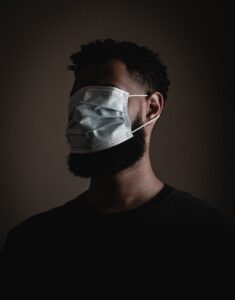In New York, in Chicago, in California, in North Texas, even overseas, COVID-19 cases are beginning to tick upward with a new variant called Eris (appropriately named for the Greek goddess of strife and discord who started the Trojan War with her golden apple). With the heat pushing people indoors and protection from vaccinations waning, it appears another fall wave is on its way just as the school year is starting.
In this late stage of the pandemic, it may feel challenging to keep COVID-19 stories fresh for a fatigued public. But COVID-19 is here to stay, so it may help to think of COVID-19 stories much as you would your annual flu stories: Even if it feels as though you’ve written it before, your audience needs the information again about how rates are trending, tips on reducing risk of infection, and what’s going on with vaccines and boosters.
Here are some things to keep in mind as you prepare your coverage:
Use the back-to-school angle
The big question for many people right now has to do with preparing their children for returning to school. While most students are no longer masking in the classroom, kids coming from homes with more vulnerable household members — such as elderly, frail grandparents or an immune-compromised parent or sibling — often do continue to mask, especially when risks are higher. Those same families are anxious for information on how they can reduce their risks in the midst of back-to-school nights, sports, band practice and related school activities.
A study published June 1 in JAMA Network Open looked at the role of children as SARS-CoV-2 vectors from October 2019 to October 2022. Among 862,577 people from more than 320,000 households, the researchers identified 38,787 transmissions in 166,170 households. The main finding: The index case in 70% of these households was a child. In other words, 70% of household transmissions — it ranged from 37% to 85% depending on the week — began with a child.
Once most schools are back in session, children are likely to play a significant role again in infection transmission, and many families will be eager for articles that offer tips on reducing that risk. Independent data journalist Betsy Ladyzhets has some great tips at the COVID-19 Data Dispatch.
If you haven’t already done so, identify the best sources of local data on rates in your area
The combined effects of home testing, lack of mandatory reporting of positive tests, inadequate wastewater surveillance in many areas, and — fortunately, largely due to widespread vaccination — lower death rates mean that it’s sometimes harder to get a handle on what the current spread of COVID-19 looks like in different states or regions.
The CDC dashboard still provides statewide and county data on deaths, hospital admissions and emergency visits, and national wastewater surveillance continues to improve. A recent webinar from the People’s CDC offers more information on using wastewater surveillance to track rates. However, you can supplement that data with information from local health care facilities if you develop and maintain relationships with the media departments of nearby hospitals and emergency clinics.
Provide clear information on updated vaccine boosters — and who is paying for them
A common question right now is who might need booster shots and when. At the moment, the only boosters available are unchanged from last fall — the bivalent shots that contain the original SARS-CoV-2 strain and one from an early Omicron variant. The last recommendation for boosters was in April, when the FDA authorized an additional booster for adults over 65 and those with compromised immune systems. But only 17% of that population got the shot.
Those people are still eligible for the booster, but new monovalent boosters, containing the XBB.1.5 variant that dominated spring and summer infections, are expected in late September to early October.
So what should people get, and when? Rely on your experts to provide suggestions for your specific audience.
Those at higher risk may be best served getting a booster now if they never got the one recommended in April and are living in an area with rising rates. For children and teens returning to school, it might be best to wait for the new ones — but again, that could depend on who else is in their household and whether they ever got their last booster or had an infection within the past several months. (Bruce Y. Lee does a great job at Forbes of discussing some of the pros and cons of getting boosters now versus waiting for the new ones in the fall.)
This CDC page provides details on exactly what shots people in different age and risk groups should have already received, but experts in your local area can offer more tailored recommendations for your audience.
Another difference between past and current boosters is how people will pay for them. Although the federal government continues to distribute COVID-19 vaccines for free regardless of insurance, that program will end in the fall. The CDC plans to replace it with their Bridge Access Program providing free COVID-19 vaccines to uninsured and underinsured adults through December 2024. The agency estimates this will help 25-30 million people. Moderna and Pfizer also pledged to make vaccines available at no cost to uninsured people.
This KFF Health News fact sheet provides background on how prices and payers have shifted since vaccines became available. Going forward, further changes could occur regarding the costs and payers for COVID-19 vaccines. The National Press Foundation is hosting a webinar for journalists on Sept. 12 about the future of COVID-19 vaccine coverage.
Remind people of the stakes, especially when it comes to Long COVID
For many people, the biggest threat posed by the virus is Long COVID. Despite a $1 billion federal investment in studying and treating Long COVID, the National Institutes of Health has little to show for it, as Betsy Ladyzhets recently reported in an excellent STAT article. (By the way, if you haven’t subscribed to Ladyzhets’ COVID-19 Data Dispatch, it’s one of the best resources out there for COVID-19 coverage.)
Reporting on Long COVID has lagged throughout the pandemic, rarely getting the respect that such a debilitating and costly illness deserves. I still encounter people who haven’t heard of Long COVID and aren’t aware that even a mild infection could lead to symptoms lasting a year or longer, with serious repercussions for employment and caregiving responsibilities.
Some folks may become complacent about the risk of infection if they’ve already had COVID-19, but research has shown that reinfection carries a greater risk of death, hospitalization, and — importantly — long-term symptoms, even for those vaccinated against COVID-19.
Rachel Garner, a Seattle-based science fact-checker, said she would like to see broader coverage of studies looking at the cumulative and long-term effects of COVID-19, which many doctors may not have time to stay up-to-date on.
Masking is a disability justice issue
If you’re looking for another under-covered angle, Garner pointed out that masking should fall within the scope of a reasonable accommodation under the Americans with Disabilities Act. Yet some medical practitioners still refuse to wear a mask, and some facilities have even attempted policies that may make it more difficult for patients to ensure their clinicians will wear a mask when asked.
“There’s a huge issue with the rights of disabled folks being violated in the rush to get back to normal,” Garner said. “A lot of people are choosing to put off necessary and high-stakes medical care because there’s no guarantee they’ll be able to get accommodations that would keep them safe during procedures or inpatient stays.”
COVID-19 continues to impact other areas of health care
Another less covered angle about COVID-19 is the way the pandemic has continued to impact other areas of health care, whether it’s an uptick in cancer diagnosis after missed screenings or reduced resources for fighting other diseases. A good example is the two-part series Kamala Thiagarajan wrote for Johns Hopkins Bloomberg School of Public Health and a piece she did for the BBC on how COVID-19 has set back treatment for leprosy in India. There could be local impacts on diseases and health care in your area that you won’t know about unless you ask local sources what they’re seeing.
Don’t assume your audience is as COVID-19-fatigued as you think they are
Sure, loads of people are tired of hearing about COVID-19, but many others remain anxious, conscientious and cautious — and many in that last group are frustrated by not having enough information to make day-to-day decisions to protect themselves and their loved ones.
Not a week goes by that I don’t hear from someone who says they feel gaslit by public health agencies that seem to have all but forgotten about COVID-19 and rarely even mention masking anymore. Many are also frustrated by how difficult it can be to get local data on rates and trends.
That makes your job all the more important.










